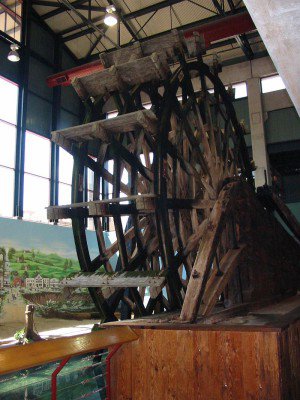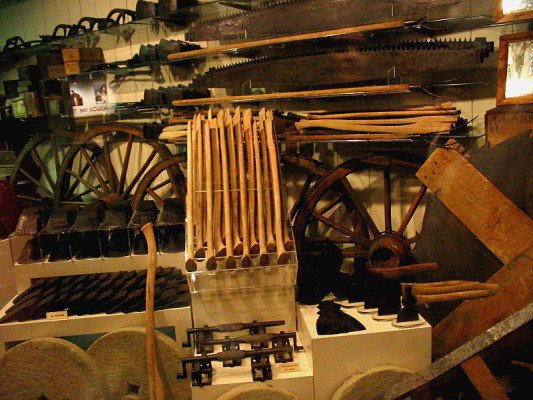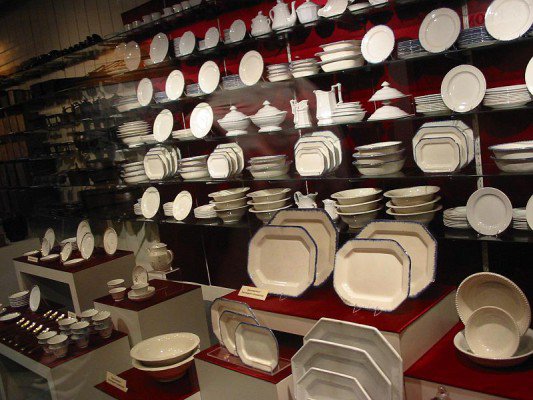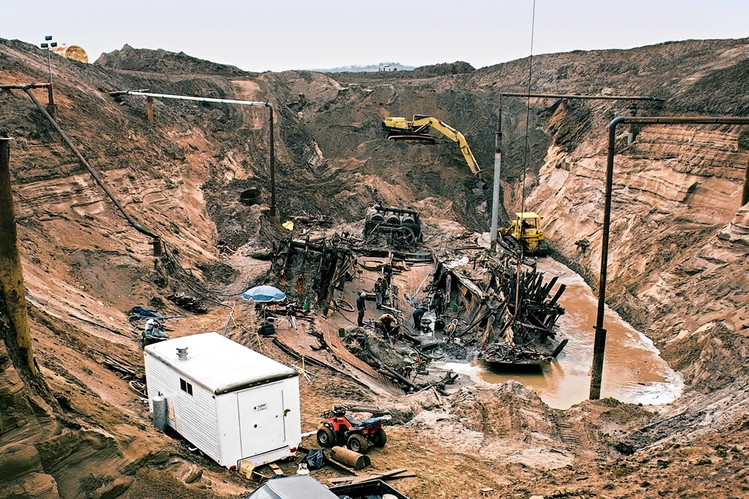In 1988, a group of treasure hunters found a steamboat that was buried in a Kansas cornfield. It was loaded with supplies for 16 towns.
This ship was the Arabia, whose hull had been punctured by a submerged tree on September 5th, 1856, near Parkville, Missouri, which is six miles north of Kansas City.
The ship was just three years old when it set sail on the Missouri from St. Louis, headed westward to deliver the supplies for the 16 frontier towns.

There were 4,000 pairs of shoes and boots, 20,000 feet of lumber, two prefab homes headed to Logan, Nebraska, a sawmill and fixtures, and a case of Otard Dupuy & Co. cognac. Today, all the artifacts recovered on the Arabia are in the Arabia Steamboat Museum.
In 1853, the Arabia was built around the Monongahela River in Brownsville, Pennsylvania. The paddlewheels were 28 feet wide, and the steam boilers went through around 30 cords of wood per day. The boat went about five miles per hour going upstream.
Originally, the boat traveled up and down both the Ohio and Mississippi rivers until being purchased by Captain John Shaw, who then operated the boat on the Missouri River.
The first job he used it for was to transport 109 soldiers from Fort Leavenworth to Fort Pierre, which was located up the river in South Dakota.

He then traveled the Yellowstone River, adding another 700 miles to his trip. The entire voyage took almost three months to finish. The boat was then sold in the spring of 1856 to Captain William Terrill and William Boyd and made a total of 14 trips up and down the Missouri while they owned it.
The boat collided with something in March, nearly sinking with a damaged rudder. The necessary repairs were made in Portland. A few weeks later, the boat blew a cylinder head, and the boat had to be repaired again.
The Arabia was stopped and searched by pro-slavery Border Ruffians near Lexington, Missouri in March 1856. Newspaper reports at the time, there was a Pennsylvania abolitionist onboard the Arabia, and he dropped a letter which was found and turned over to Captain Shaw.
In the written letter, there was mention of guns and cannons in route to slavery-free Kansas Territory from the abolitionist Massachusetts Aid Society. The ship was searched, and the weapons were found in crates labeled “Carpenters Tools” and were all confiscated.

Earlier in the story, it was told that the Arabia hit an underwater tree and it went through its hull. But you don’t know that the upper decks stayed above water and that the only casualty was a mule that was tied to a sawmill and forgotten.
The Arabia sank so fast into the mud that by the following morning, only the smokestacks and pilothouse were left visible. Over the next couple of days, even those remnants were gone. Several attempts to salvage the vessel failed, and the boat was eventually covered by water. Over time, the river shifted a half mile east.
The site of the sinking is in present-day Kansas City, Kansas. Elisha Sortor bought the property where the boat sank in the 1860s. Even though stories were told and passed through the generations of her family, nobody ever tried to find it. In the neighboring town, stories were also told of the steamboat, but nobody knew the exact location.
Bob Hawley and his sons, Greg and David, set out to find the boat in 1987. Using a proton magnetometer and old maps to try and determine the probable location, the Hawley’s finally discovered the Arabia half a mile from the river under 45 feet of silt and topsoil.
The people that owned the farm where the Hawley’s located the boat, gave their permission for excavation with the condition that the dig and removal be completed prior to the spring planting. The Hawley’s and family friends Jerry Mackey and David Luttrell set out to excavate the Arabia during the winter months while the water was at its lowest.
They had a series of drilling tests performed to determine where the hull was and then marked the perimeter with powdered chalk. Large equipment was brought in by both land and water, including a 100-ton crane. To keep the site from flooding, they had to bring in 20 irrigation pumps and install them around the site. Several 65-foot-deep wells got rid of 20,000 gallons of water per minute from the ground.
The boat was exposed on November 26, 1988. Four days after, they started finding artifacts, beginning with a Goodyear rubber overshoe. On 5 December 1988, they found a wooden crate filled with elegant china. The mud worked as an excellent preserver of the artifacts.
They found thousands of artifacts still intact, including jars with preserved food inside that was still edible. All the recovered artifacts are at the Arabia Steamboat Museum.
On February 11, 1989, all pumps were turned off, and all worked stopped. By the next morning, the site was full of water once again.
The Arabia Steamboat Museum was opened on November 13, 1991 in the Kansas City River Market. The museum boasts 30,000 square feet of the largest single collection of pre-Civil War artifacts in the world, says the partners of River Salvage, Inc., who excavated the Steamboat Arabia and opened the museum.
Once the excavation was over, the partners of River Salvage Inc., were on to their next major undertaking; learning to clean and preserve the artifacts.
While they were in the process of digging for the boat, most of the organic artifacts had to be stabilized in blocks of ice: in both freezers that were installed in underground caves near the Missouri River and in Jerry Mackey’s freezers at his restaurant.
Three months after the dig, the paddle wheel of the steamboat, the two prefabricated homes, and the stern section were all submerged in an 80×20 foot pool that was dug specifically for the team.
Greg Hawley worked with conservationists on the Mary Rose Trust in Portsmouth, England and the Canadian Conservation Institute in Ottawa, along with the Historical Resource Conservation Branch of the Canadian Parks Service, to learn the techniques for freshwater preservation. That preservation technique is still in use today at the museum.
The organics like wood and leather are submerged in a food preservative called polyethylene glycol (PEG) and then freeze dried. Using special erasers and metal tools, preservationists gently remove oxidized material from any of the metal artifacts.
All the bottled/jarred food and beverages that were found are injected with nitrogen, which is an inert gas. Garments, shoes, and boots are all re-stitched since their cotton thread dissolved underwater. It has been projected that the preservation process for all the recovered artifacts will take until 2022 to complete.
Reception
The Arabia Steamboat Museum has constantly received great press. The Kansas City Star named the museum “Rookie of the Year” in 1992 after having over 20,000 visitors in two month’s pass through its doors.
As of 2013, the museum continued to draw more than 80,000 visitors per year.
It is described by the Wall Street Journal as a “fascinating” museum with an “enthralling” story. US News & World Report ranks it #1 on its list of “Best Things to Do in Kansas City.”
Another Article From Us: SS United States: A Fate Unknown
